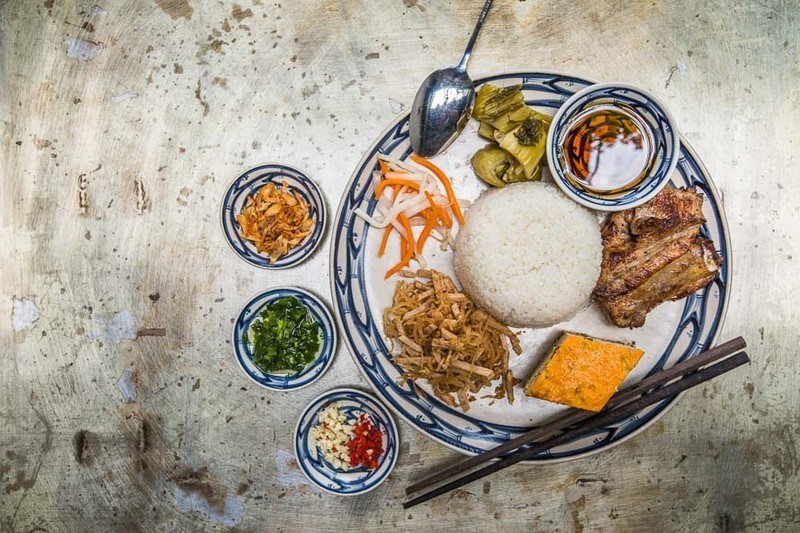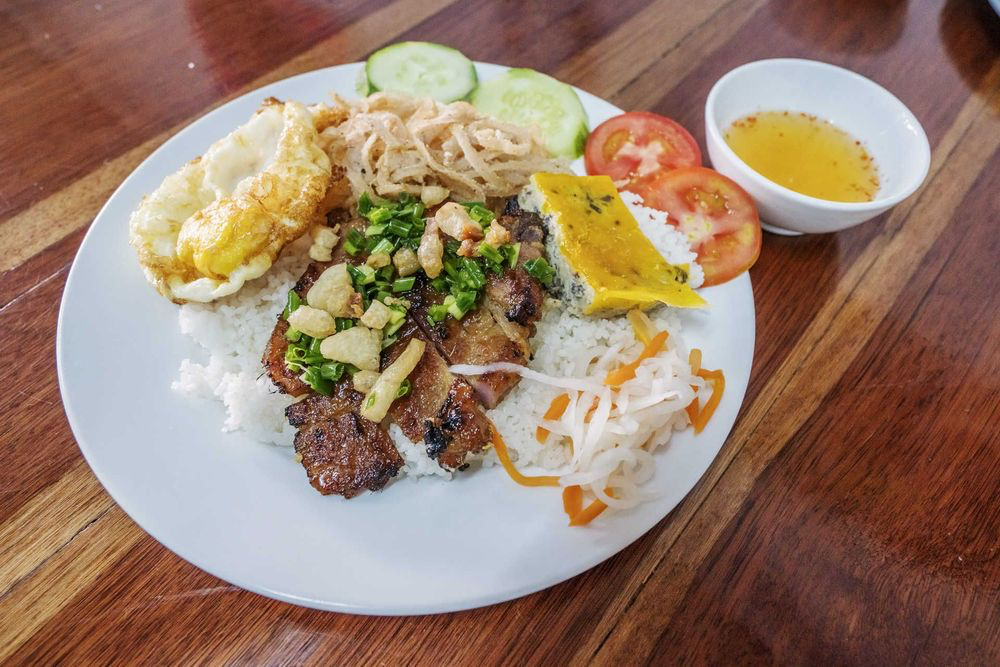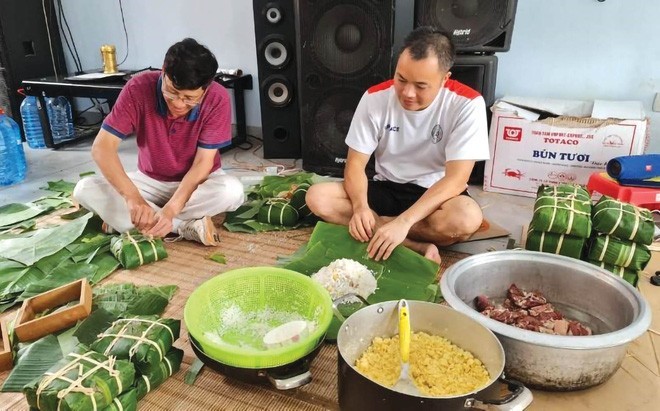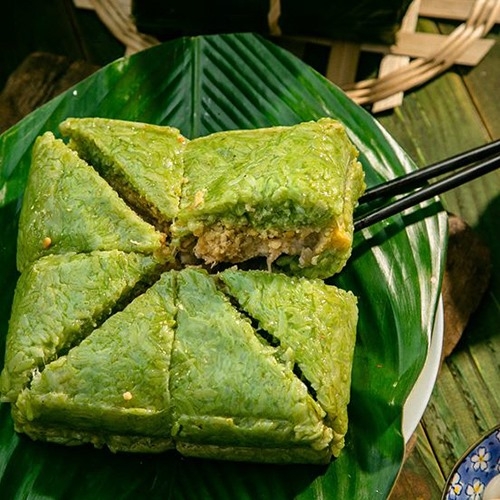TasteAtlas has recently unveiled their list of the 100 most scrumptious rice dishes from around the world. Vietnam has two delectable rice specialties that made the cut, with their broken rice taking an impressive 3rd place and their banh chung (square glutinous rice cake) at 97th.
 |
| Broken rice (or com tam) has become a must-try dish for locals, foreign visitors, and travellers to Vietnam. Photo: Vietnamtourism |
Accordingly, Vietnam’s broken rice (locally known as com tam) was chosen as the second place among the top 100 most delicious rice dishes in Asia by TasteAtlas, the home of local food, traditional restaurants, and authentic recipes, in March this year, VNA reported Tuesday.
This traditional dish from Vietnam is cooked using broken rice, which was traditionally considered a food for the poor. Nowadays, however, it has become a highly popular dish in the country, particularly in Hanoi and Ho Chi Minh City. According to TasteAtlas, this Vietnamese delicacy is so beloved that it even outranked Japanese sushi in terms of popularity.
My friend Chiam Jia Xine from Malaysia recently shared with me his experience of travelling to Hanoi and mentioned that, apart from the popular local delicacy of bun cha (vermicelli with grilled pork and fresh herbs) and rau muong xao (fried morning glory with garlic), he was also intrigued by broken rice.
“I love the taste of broken rice paired with grilled sour and sweet pork ribs and a salad composed of diced cucumbers, tomato slices, minced garlic, and chili,” he said, adding that what he enjoys the most about this dish is its soft, fragrant, and sweet flavor.
Different from the traditional Vietnamese habit of using chopsticks, this rice dish is used table wares like those of Western people, he noted.
Came into being in Sai Gon (now HCM City) in the early 20th century, as Vietnam underwent the process of urbanization, broken rice became a popular dish in the southern provinces to meet the growing demand, according to 80-year-old HCM City resident Dang Hong Minh.
When becoming the country’s biggest tourism destination, drawing in hordes of international visitors, tourists, and businesses, merchants in the city have switched up their table settings to make the dish more palatable for foreign guests, rather than using chopsticks and bowls as before, Minh said.
 |
| Com Tam, Vietnam food © Tonkinphotography/Shutterstock |
Today com tam has become a renowned symbol of Saigon cuisine. It is often said that “Saigonites eat broken rice as much as Hanoians eat pho (noodle soup)”.
In the past, com tam was considered rice for poor people because the broken rice was considered chicken food. But when people discovered its tastier and rich in protein and vitamins such as B1, it became a famous speciality that both local diners and foreigners wish to enjoy, Minh said.
The main ingredients to be eaten with a com tam plate include grilled sour and sweet pork ribs, nem chao (boiled pork skin cut into threads, cut bacon mixed with fish sauce, roasted rice powder and spices), and many other accompaniments.
Restaurants are serving delicious broken rice with fried tofu, braised pork, and steamed egg mixed with minced pork, vermicelli pieces, wood ears, fragrant mushroom, fresh onions, and spicy (locally known as com tam cha); as well as fried fish, and boiled chicken, said Minh.
There are various types of com tam, a popular Vietnamese dish. These include broken rice cooked in a small earthen pot, fried broken rice according to Vietnamese or Thai recipes, and com chao, a dish in which broken rice, vegetables, meat, and eggs are stirred together in a pan and served hot.
In 2012, CNN noted that street broken rice is a highly sought-after and popular dish in Saigon. That same year, in August, the Asia Book of Records acknowledged the culinary value of Saigon’s broken rice, together with nine other Vietnamese delicacies.
Furthermore, the EBS TV of the Republic of Korea (RoK) also lavishly praised broken rice as the specialty dish of Saigon, saying that those visiting the city and failing to try the dish may not truly understand it.
 |
| The cake, a must-have food during Tet, is made of sticky rice, pork and green bean wrapper inside a special leaf called Dong and boiled for about 12 hours. Photo: VNA |
Meanwhile, Banh chung (square glutinous rice cake) was rated with a score of 4.1/5, ranked 97th out of the 100 best rice dishes in the world. Banh chung is a traditional dish of Vietnamese people, an indispensable dish during Tet (Lunar New Year). For Vietnamese, making Chung cake is a way to express gratitude to their ancestors and homeland. Nowadays, banh chung is known and loved by many foreigners because of its delicious taste and distinctive meaning.
Chung Cake, an ancient Vietnamese delicacy, was invented by the 18th Prince of the Hung Emperor in a contest to find the new Emperor. According to legend, 3,000-4,000 years ago, Prince Lang Lieu created round and square cakes for the occasion of Spring. The round Day cake symbolized the sky, while the square Chung cake represented the Earth, according to ancient Vietnamese beliefs.
The main ingredient of bánh chưng – a traditional Vietnamese cake eaten on special occasions – is sticky rice, which was one of the most important foods to ancient Vietnamese people. Hidden inside the sticky rice layer is a delicious filling made from mung bean and fatty pork. This cake is a beautiful representation of respect for ancestors and Mother Nature.
The King was so impressed with Banh Chung, a traditional Vietnamese Square Sticky Rice Cake, that he decided to pass the throne to its creator. Every year, this sumptuous dish is an important part of the Vietnamese Lunar New Year Feast, and it’s easy to see why. Filled with fragrant rice, creamy mung bean, tender pork, and a hint of heat from plenty of black pepper, it’s no wonder this dish is a favorite.
 |
| The very soul of Vietnamese Tet is banh chung (square glutinous rice cake). |
Apart from the traditional Bánh Chưng, people have also created unique variations of the dish, such as Bánh Chưng gấc, which is made with Momordica Cochinchinensis, and Bánh Chưng gạo lứt, which is made with brown rice. Both of these variations offer an interesting twist to the classic dish and are sure to tantalize the taste buds.



